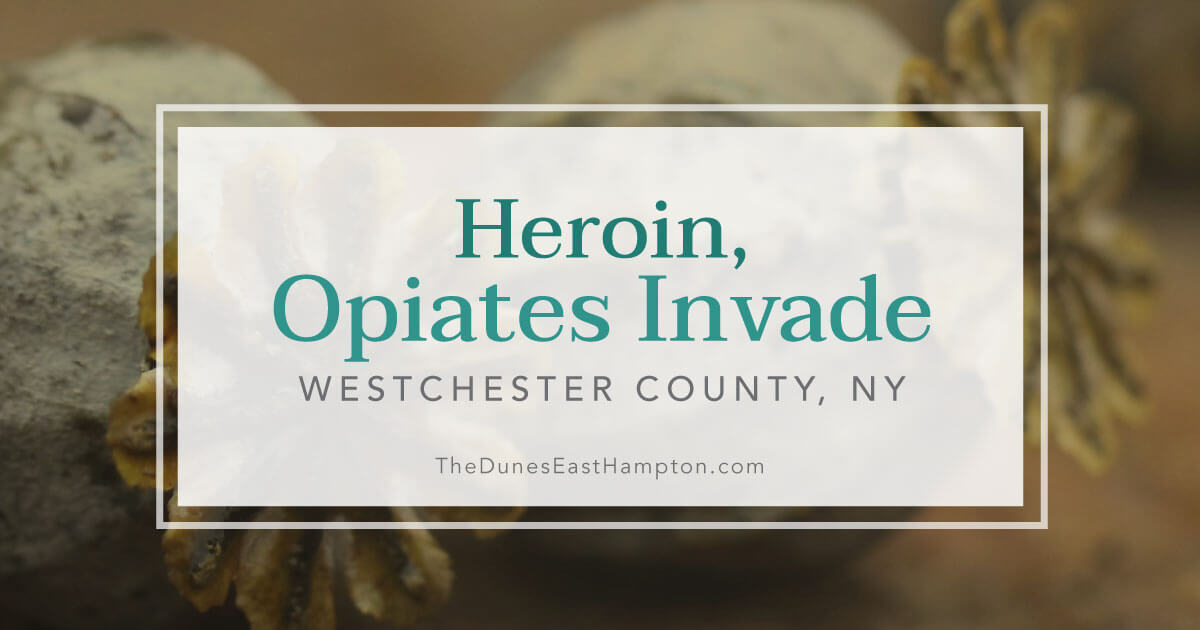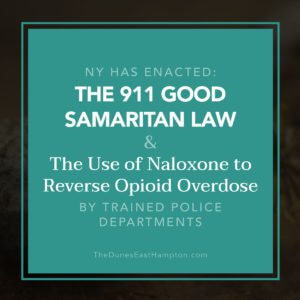
Details of the Heroin and Opiate Invasion in Westchester County, NY
America is addicted to opiates. The Centers for Disease Control and Prevention (CDC) has labeled opioid overdoses a “national epidemic” in its appeal to the public to help prevent opioid abuse, addiction, and overdose. Almost every state has reported frightening increases in opioid and heroin use in the last few years, and New York is no exception. Heroin and opiates have moved out of NY’s low-income areas – the traditional demographic for opiate abuse – and into the suburbs. One suburb the epidemic has hit with particular intensity is Westchester County.
Opiates Move Into New York’s Suburbs
One of the factors propelling the opiate issue across America is that opiate use has moved from poverty-stricken neighborhoods to wealthy, upper-class suburbs. This unprecedented shift stems from prescription opioid abuse and addiction. Patients receive prescriptions for powerful painkillers such as oxycodone, hydrocodone, codeine, and fentanyl without realizing their high risk for addiction. This has led to many legitimate patients becoming addicted to prescription pills, eventually turning to pill mills or the black market to feed their addiction.
According to the National Institute on Drug Abuse, nearly half of young prescription opioid addicts transition to heroin – a much cheaper and more easily obtained opiate in New York than painkillers. Heroin is a much stronger opiate than prescription drugs, sending the patient further into his or her drug abuse problem. Heroin is an illegal and unregulated drug, leading to different levels of purity and strength. Drug dealers often lace heroin with other dangerous drugs, such as fentanyl. Many users do not recognize the incredible potency of heroin compared to prescription drugs, and accidentally overdose.
The CDC reported that heroin-related deaths in the U.S. almost tripled between 2010 and 2013. The New York State Health Department recorded 924 heroin overdose deaths in 2009. In 2014 (the most recent year data is available), this number has jumped to 1,443 overdose deaths. Surprisingly, some of the largest overdose increases occurred in New York’s upscale suburbs – namely, Westchester County. Thus, prescription opioids have effectively brought heroin and other opiates into NY’s suburbs.
Westchester County’s Battle Against Opiates
As prescription opioids, heroin, and other opiates invade New York’s suburbs, law enforcement officials and the Drug Enforcement Administration (DEA) have revamped their efforts to stop drug traffickers. Several major drug busts in Westchester County in the last year have given citizens hope for a drug-free future – while simultaneously shedding light on the major drug problem in the area. The DEA has gone undercover, spending hundreds of hours in the field to track down major sources for heroin in the region. Their efforts have largely paid off.
The DEA’s largest-ever heroin bust in Westchester County occurred in Cortlandt, on August 25, 2016. Authorities targeted two men who moved more than 65 pounds of heroin (about 2.3 million dollars’ worth) from Mexico into Cortlandt. The two men liked the town’s seclusion, and decided to make it the destination of their international drug operation. The DEA seized the 65 pounds of heroin from a tractor-trailer parked on Sassi Drive – a quiet, residential street about 30 miles from New York City.
Drug Seizure in Cortlandt
The enormous drug seizure in Cortlandt was the culmination of a three-month-long wiretap investigation. Authorities say they tracked the heroin during its journey across the Mexico-Texas border and into Cortlandt. The men had the drugs hidden in the axle of the trailer. They intended to sell the heroin throughout Long Island, NYC, and the Lower Hudson Valley. This success was a major one for Westchester County and all of New York State, but it is just the beginning of a long road ahead.
What Law Enforcement Is Doing To Prevent Drug Abuse
Law enforcement agencies in Westchester County have aggressively pursued drug traffickers since the frightening increase in opiate-related overdoses. As heroin use continues to spike, however, at least one police department is taking a less vigorous approach. Harrison police are showing leniency to heroin and opioid users instead of indicting them. Harrison Police Chief Anthony Marraccini says the department is trying to persuade opiate users to come to them and bring their drugs – with no penalties, no arrest, and no interrogation.
 New York enacted two important developments to try to combat the wave of opiate addictions: the 911 Good Samaritan Law, and the use of naloxone to reverse opioid overdose. More police departments around Westchester County now carry naloxone for emergency use, and go through training programs for how to use the drug. In 2014, officials administered naloxone in over 12,000 emergency calls – up 57% from the year before. The 911 Good Samaritan Law allows a person to dial 911 for help for someone who is overdosing from drugs (or alcohol) without fear of prosecution or charges for drug-related crimes. New York law enforcement agencies hope these measures will reduce the number of opiate-related deaths.
New York enacted two important developments to try to combat the wave of opiate addictions: the 911 Good Samaritan Law, and the use of naloxone to reverse opioid overdose. More police departments around Westchester County now carry naloxone for emergency use, and go through training programs for how to use the drug. In 2014, officials administered naloxone in over 12,000 emergency calls – up 57% from the year before. The 911 Good Samaritan Law allows a person to dial 911 for help for someone who is overdosing from drugs (or alcohol) without fear of prosecution or charges for drug-related crimes. New York law enforcement agencies hope these measures will reduce the number of opiate-related deaths.
The Department of Public Safety, along with seven northern Westchester County police departments and the Federal Bureau of Investigation (FBI), recently disclosed a year-long heroin initiative to combat the sale and distribution of heroin in the area: the Westchester County Northern Narcotics Initiative. The goal of the initiative was to target dealers on the street level and their suppliers. The initiative has led to more than 125 arrests across northern Westchester. In addition to this initiative, the county will work with community coalitions, youth organizations, and school officials to address the heroin problem beginning with the county’s youth.
New York Officials Optimistic About the Future
Despite staggering numbers of heroin-related deaths in New York in the last few years, Westchester County officials are optimistic about the future. Great efforts on the part of the DEA and several other organizations have taken more than 100 heroin dealers off the streets in less than a year. Associations are targeting the area’s youth, educating them on the risks of prescription pills and heroin addiction in the hopes of preventing drug abuse.
The more widespread availability of naloxone will reduce the number of heroin-related deaths, and more lenient police departments will ideally encourage more addicts to come forward and relinquish their supplies. All of these efforts combined may be the key to regaining control of the heroin and opiate epidemic that has spread across Westchester County like wildfire.







